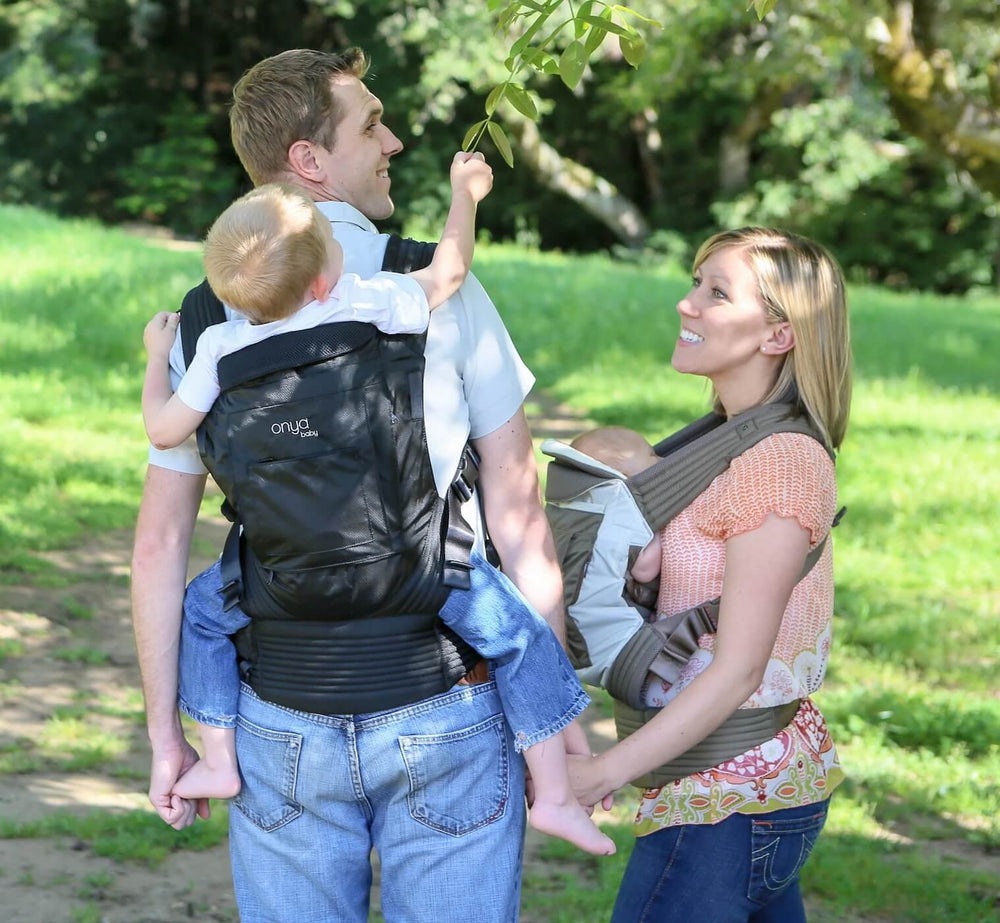Part 1: Sling, Wrap, Mei Tai, Soft-Structured Carrier: What’s the Difference?
The first in a series of different kinds of baby carriers, we’ll talk about:
You might be wondering, with all the babywearing options out there, what the difference is between them all. We’ll break it down, and also provide a few resources where you can find more information, people to chat with, fluff-lovers galore and all-around awesomeness.
In the interest of keeping this post short enough to read in one sitting, we’ll split this subject into several posts. First installment: Slings.
Here goes:
Slings:
-
Pouch: Loop of fabric with a curved seam for Baby’s bum. Some pouches have padded a rail (that’s where the baby’s legs rest). Fitted pouches are sized to fit the wearer’s body and adjustable pouches are, well, adjustable. It is possible to nurse our baby in a pouch, but really only when they’re tiny.
-Pouch examples: Hot Slings, New Native, The Chic Papoose, The Peanut Shell -
Ring sling: Long piece of fabric that threads through two rings for adjustability. Some ring slings are padded, which means that either (or both) the shoulder and/or leg rails have padding sewn into them. There are open-tailed ring slings, which just means that the fabric that the sling fabric is the same width all along it. Some open-tailed ring slings have pockets. Open tailed ring slings provide more coverage for someone who feels more comfortable nursing in public with a bit of fabric for discretion. There are also closed-tail ring slings, on which the tail (the part that extends past the rings when worn) is sewn closed. It makes the tail more like a strap. It’s not so great for covering up (if that’s what a woman wants), but it is more stream-lined looking.
-Unpadded ring sling examples: Maya Wrap, Sakura Bloom, P-Sling, Zolowear
-Padded ring sling examples: Heart-to-Heart, Over the Shoulder Baby Holder, NoJo
Both pouches and ring slings are one-shouldered carriers designed for front carries. It’s possible to do a back carry with a sling, but there really are better carriers for back carries.
Slings are great for:
- tiny babies: because slings hold your baby close and snug, and because they’re easy to nurse in, they are very safe for squishy newborns. They also help give parents the confidence to move onto other carriers when they’re babies get bigger and less comfortable in a one-shouldered carrier. A sling is a gate-way carrier? Maybe so.
- poppability: it’s easy to keep one on and pop baby in and out when running errands or when they want up/down every two minutes. Have a toddler? You know what we mean.
- ease of use: the learning curve for a sling, especially a pouch, is very small. They’re easy and most people can master them quickly, gaining confidence in their babywearing skills, and overall parenting skills in calming their baby.
- very packable: slings fold up very small, so it’s easy to keep one in your bag.
Slings have some drawbacks:
- one-shouldered carriers work well when baby is little, but can be pretty uncomfortable once your baby gets bigger.
- a sized pouch can only be used by the person it fits, i.e., can’t be shared by spouses or partners unless they wear the same size.








